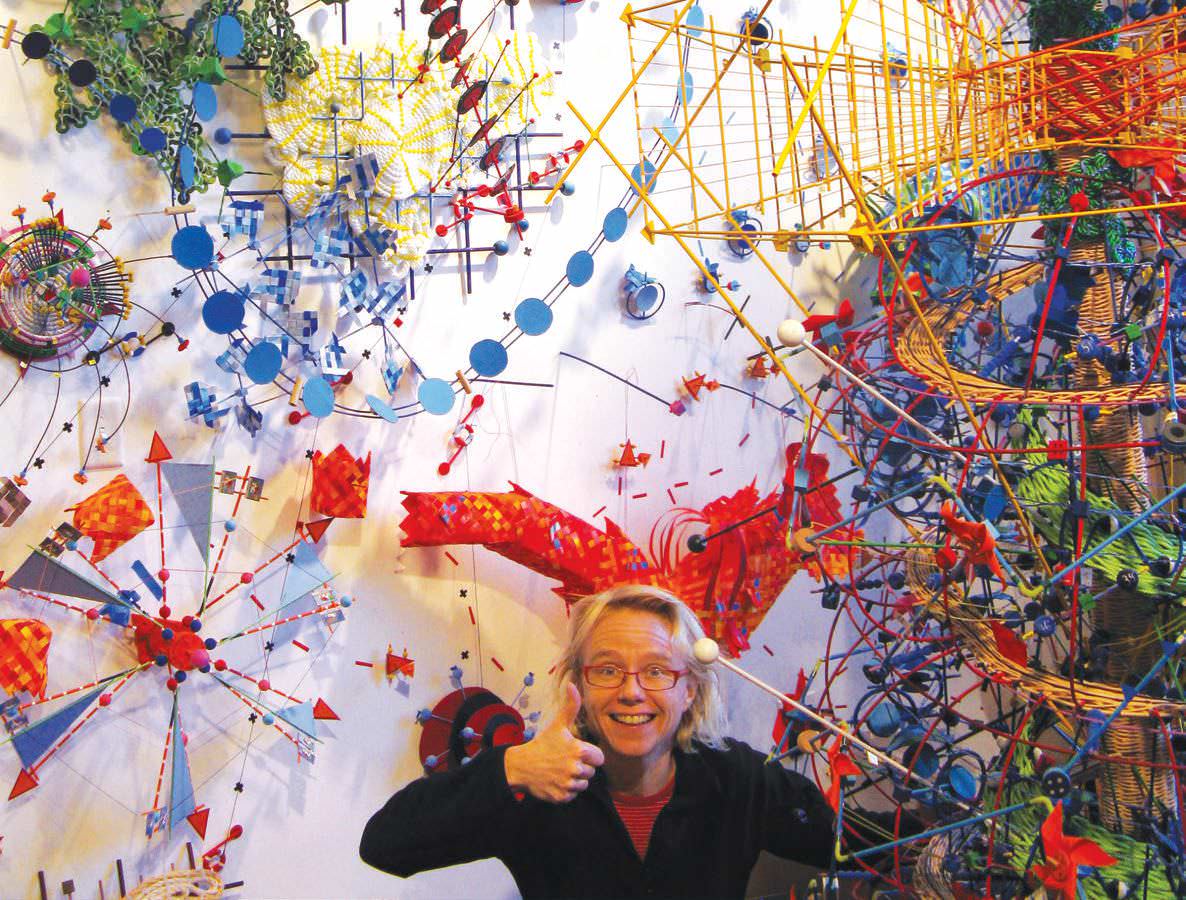December 6, 2021
The Week of Code at Lincoln School kicked off on December 6 with a presentation by Nathalie Miebach. Miebach is a Boston-based sculptor who translates scientific data into woven sculptures and musical scores. She’s been doing this for nearly 20 years, focusing predominantly on weather and climate change. Recently, she has also been focusing on COVID-19 data, exploring not just the scientific phenomena of weather and its impact on us, but also the human response to these events, especially in the context of climate change.
John Diego Arango, Director of the STEAMx Program at Lincoln School, introduced Miebach to the students. He emphasized the importance of integrating art with science, a hallmark of the STEAMx initiative.
We had the opportunity to interview Ms. Miebach prior to her presentation for Middle and Upper School students.
What will students be learning from you today?
I’m going to be bringing the students, in a sense, into the studio process. My work is very playful. It looks very playful. A lot of people think when they first encounter the studio or the work, they think it’s all about games and toys. And that’s all very deliberate. You’ll notice lots of beads, lots of dowels, lots of woven structures, sometimes even references to actual forms like dragons or cars.
But when you look deeper into it, you begin to notice that there are little tags, little numbers attached to each of these components. And you begin to realize that there’s a numerical logic that’s holding it all together. So, I’m going to be showing the students how I began as a sculptor.
How did you get into this line of work?
It was because of my interest in science, and I came to this rather late in my life. I did not go to school thinking I was going to be an artist. I went to college and majored in political science and Chinese and then ended up getting a degree in art education. I thought I would be a teacher. But then in my 30s, I started taking science classes at night school and became really fascinated by it. As a tactile learner, I had to find some sort of medium to address these questions I had about science. I happened to be taking a basket weaving class at the same time that I started taking these classes at Harvard in the astronomy department, which were so fantastic. I thought, ‘Well, if I can make sculptures about astronomy, why don’t I just use this medium to investigate all sorts of questions I have about science?’ And that’s what I’ve been doing ever since.
So, art and science were there from the very beginning. I don’t really separate the two. It’s been a really interesting journey.
Would you be able to talk about your creative thinking process when you approach a new piece of work?
One of the most important elements, and I think one of the hardest elements to bring into the creative process, is play. The reason I say it’s hard is that to create the conditions of play, you have to step away from expectations. You have to step away from the need to succeed. You have to be open to failures, and you just have to be open to not knowing everything. So, any kind of creative endeavor, if it leads to anything that I remotely like, has to involve play.
Also, one of the reasons I love working with basket weaving is that it’s all about engineering. It is all about problem-solving. So, with every piece that I make, I learn more about structure and engineering. I always think that learning how to weave is teaching your hands how to listen.
Is there anything you’d like to share with students who may be interested in pursuing a career in science, art, or the intersection of the two?
Don’t get hung up on categories when you’re passionate about something. When you’re curious about something, sometimes the meandering path of incorporating multiple disciplines is the most exciting one. Don’t be afraid to combine disciplines. I have to credit a really open-minded teacher for opening up that door for me, too.
My professor at Harvard in the astronomy department, Dr. Chaisson, was instrumental in this. When it came to the final project, we all had to write a paper. I said, ‘I don’t want to write a paper. That’s not how I’m going to learn anything. I really want to make a sculpture.’ So, I made a sculpture for my final project, and I explained to him why I wanted to do it and why I felt it was a better way for me to learn. He was completely open-minded to it. He accepted the sculpture, which was a big thing—it was like 3 feet across, and he put it in his car and took it home. I was really grateful that he didn’t think I was crazy, but that he accepted this unconventional way of learning. So, don’t be afraid to find your own way of learning.
